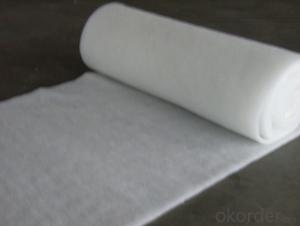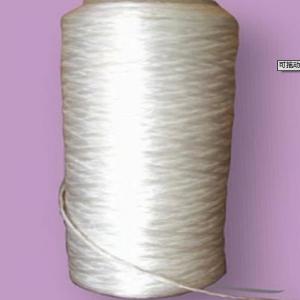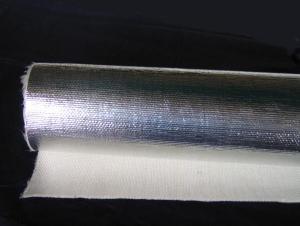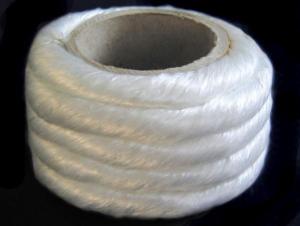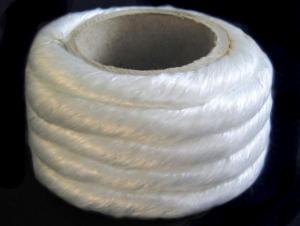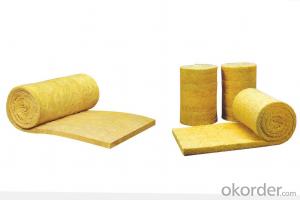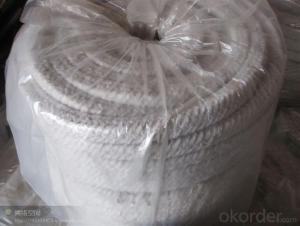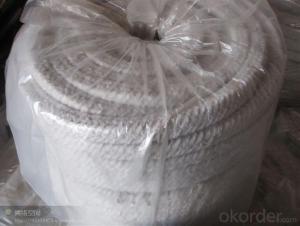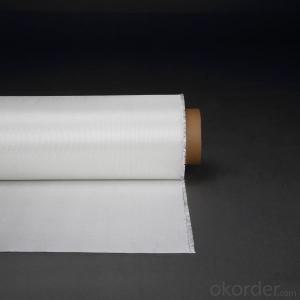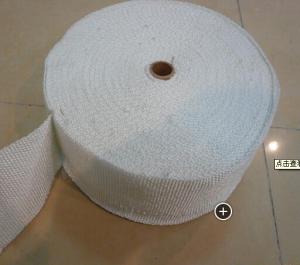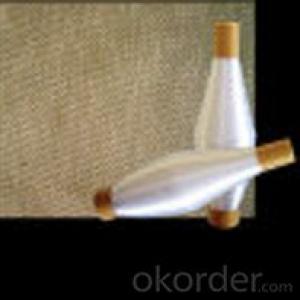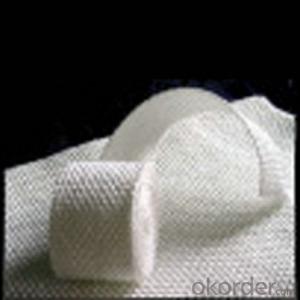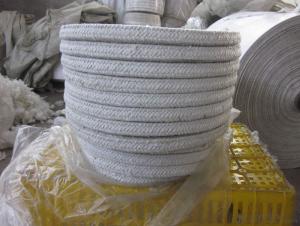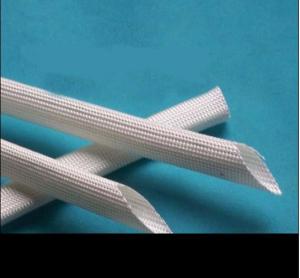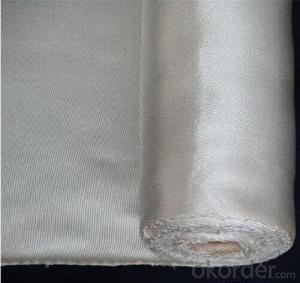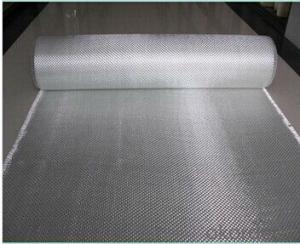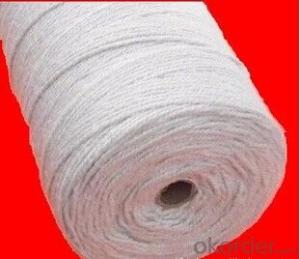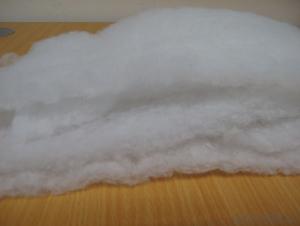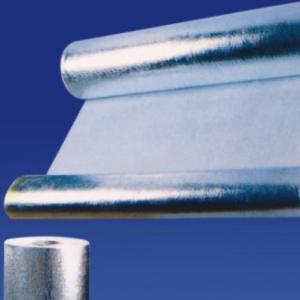Glass Fiber Textiles Refractory Heat Resistant Fiber Fabric
- Loading Port:
- Shanghai
- Payment Terms:
- TT OR LC
- Min Order Qty:
- 1 m.t.
- Supply Capability:
- 111 m.t./month
OKorder Service Pledge
OKorder Financial Service
You Might Also Like
Specifications
1.Refractory heat resistant fiber fabric
2.Heat insulation
3.white
4.High strength
5.MSDS, ISO9001-2008
Refractory Heat Resistant Fiber Fabric
It is a woven fabric made of our high quality ceramic fiber yarns. It can be used for high temperature applications up to1000° C. The cloth is reinforced with fiberglass filament, and optional stainless steel wire. It contains a certain amount of binder material which is normally burned at lower temperature and does not affect the insulation property.
Features of heat resistant fibe fabric
1.Good handling strength
2.Low thermal conductivity and heat storage
3.Excellent thermal shock resistance
4.Easy machining
5.Low weight,eastic, flexible
6.Excellent hydrophobic property
7.Smooth surface and anti-tearing
- Q: Can glass fiber textiles be used in insulation?
- Yes, glass fiber textiles can be used in insulation.
- Q: Do glass fiber textiles have good tensile strength?
- Yes, glass fiber textiles have excellent tensile strength.
- Q: Are glass fiber textiles resistant to wrinkling during washing?
- Yes, glass fiber textiles are generally resistant to wrinkling during washing. Glass fiber is known for its strength and resilience, making it less prone to wrinkling compared to other textile materials. However, it is important to note that the specific properties and characteristics of the glass fiber textile, such as the weave, fabric construction, and finishing treatments, may also affect its wrinkle resistance. It is always recommended to follow the care instructions provided by the manufacturer to ensure proper washing and maintenance of glass fiber textiles.
- Q: Can glass fiber textiles be printed?
- Yes, glass fiber textiles can be printed. The printing process typically involves using specialized inks or dyes that adhere to the glass fibers, allowing for various designs or patterns to be applied to the textile.
- Q: Are glass fiber textiles suitable for protective clothing?
- Yes, glass fiber textiles are suitable for protective clothing. Glass fiber textiles are known for their excellent heat and fire resistance properties, making them highly suitable for protective clothing in industries where workers are exposed to high temperatures or flames. They have a high melting point, which means they can withstand intense heat without melting or igniting. Additionally, glass fiber textiles have good insulation properties, providing protection against radiant heat. They are also resistant to chemicals and abrasion, making them durable and long-lasting. Glass fiber textiles can be used in various forms such as fabrics, yarns, or woven into composite materials, allowing for flexibility in design and application. However, it is important to note that glass fibers can be irritating to the skin and respiratory system, so proper precautions should be taken to protect against any potential health risks.
- Q: How do glass fiber textiles contribute to flexibility?
- Glass fiber textiles contribute to flexibility due to their unique composition and structure. The fibers themselves are extremely thin and flexible, allowing them to be woven into various patterns and configurations. This flexibility translates into the textile, enabling it to bend, stretch, and conform to different shapes and movements. Additionally, the high tensile strength of glass fibers provides added durability without sacrificing flexibility, making them ideal for applications where both properties are required.
- Q: Can glass fiber textiles be used in luggage or bags?
- Yes, glass fiber textiles can be used in luggage or bags. Glass fiber textiles are known for their high strength and durability, making them suitable for various applications, including luggage and bags. These textiles are resistant to wear and tear, making them ideal for handling the weight and stress associated with travel. Additionally, glass fiber textiles are often used in the construction of materials that need to be lightweight, yet sturdy, which is essential for luggage and bags. The use of glass fiber textiles in luggage or bags can provide added protection to the contents, as they are resistant to impacts and can withstand rough handling. Furthermore, glass fiber textiles offer excellent resistance to water and moisture, ensuring that the contents inside the luggage or bags remain dry and protected. In conclusion, glass fiber textiles are a reliable and practical choice for luggage or bags, offering durability, strength, and protection.
- Q: How do glass fiber textiles resist tearing?
- Glass fiber textiles resist tearing due to their inherent strength and durability. The fibers used in these textiles are strong and have high tensile strength, allowing them to withstand external forces without easily breaking or tearing. Additionally, the tight weaving or knitting of the fibers creates a dense and closely interlocked structure, further enhancing their tear resistance. This combination of strong fibers and tight construction makes glass fiber textiles highly resistant to tearing.
- Q: Can glass fiber textile be used in reinforcement materials?
- Glass fiber textiles, also known as fiberglass fabrics, can serve as reinforcement material. These textiles are created through the weaving or knitting of fine strands of glass fibers. They possess qualities such as high tensile strength, lightweight composition, and exceptional resistance to heat, chemicals, and electrical conductivity. Across various industries, glass fiber textiles are commonly employed for the purpose of reinforcing materials. In the construction sector, they reinforce structures by being incorporated into composite materials like fiberglass-reinforced plastic (FRP), thus enhancing strength and durability. Similarly, in the automotive industry, they are utilized in reinforcing car bodies, interiors, and engine components. Additionally, glass fiber textiles find applications in aerospace, marine, and sports sectors. In these fields, they reinforce components such as aircraft wings, boat hulls, and sporting equipment. They are also utilized in the manufacturing of electrical insulators, circuit boards, and high-performance textiles. The utilization of glass fiber textiles as reinforcement materials presents numerous advantages. Notably, they possess a lightweight nature, thereby reducing the overall weight of the final product. This attribute, coupled with their excellent strength-to-weight ratio, ensures high tensile strength while minimizing weight. Moreover, they exhibit resistance to corrosion and degradation, rendering them suitable for outdoor and harsh environment applications. In conclusion, due to their high strength, lightweight composition, and resistance to various environmental factors, glass fiber textiles can indeed be employed as reinforcement materials. Their versatility and broad range of applications establish them as a preferred choice in numerous industries.
- Q: Are glass fiber textiles resistant to pilling or fuzzing?
- Yes, glass fiber textiles are highly resistant to pilling or fuzzing.
Send your message to us
Glass Fiber Textiles Refractory Heat Resistant Fiber Fabric
- Loading Port:
- Shanghai
- Payment Terms:
- TT OR LC
- Min Order Qty:
- 1 m.t.
- Supply Capability:
- 111 m.t./month
OKorder Service Pledge
OKorder Financial Service
Similar products
Hot products
Hot Searches
Related keywords
